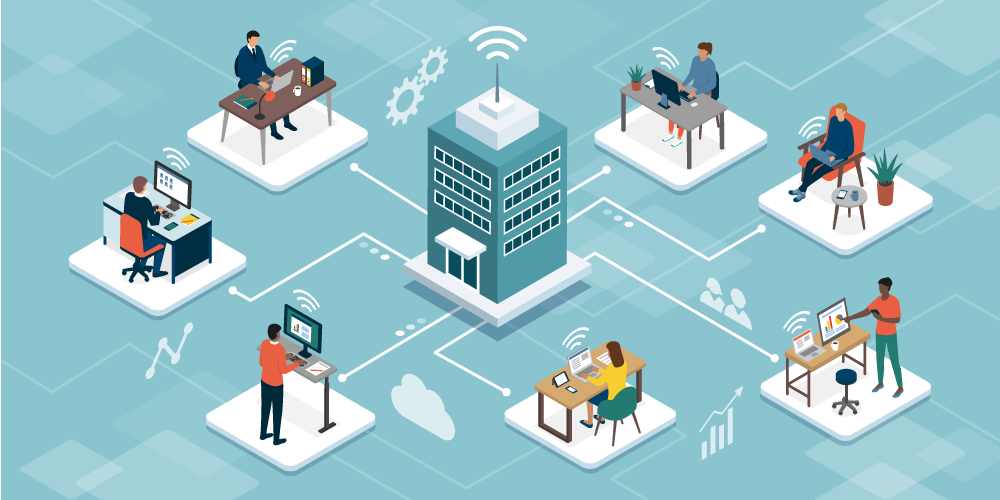Blog

Requirements for Remote Office
With remote workers becoming the ‘new normal’ in these strange times, remote office security and communication become increasingly important. Read on to learn more about preparing your employees and business for remote work.

Helping You and Your Business Survive and Thrive During COVID-19
In the last month off dealing with COVID-19, many workplaces have shut down their offices. Many employees are working remotely, and meeting via web-conferencing platforms. Read on to learn more about keeping safe, healthy and productive during unusual times.

Disaster Preparedness – COVID-19
The World Health Organization provides guidance for businesses and employers about the Coronavirus, formally known as COVID-19. Around the world, officials in government, education, and industry are preparing for a prolonged epidemic.

Business Broadband Internet and Your Network
Business Broadband Internet is the engine powering the operations of businesses worldwide. From cloud services to Unified Communications, broadband is what makes fast, uninterrupted business operations possible.

Streamline Customer Service with Unified Communications
More than ever, businesses are seeking new communications solutions. Instead of old methods, such as analog phone and private branch exchanges (PBX) and a separate computer network, companies are seeking the benefits of more streamlined, economical solutions. Read on to learn what Unified Communications–and its foundation, VoIP–can do for your business. Unified Communications Provides Greater Efficiency More and more businesses are moving into the future, using an Internet-based communications platform. According to research firm Gartner, adoption of Unified Communications (UC) is expected to grow to $167.1 billion by 2025, with an annual growth rate of 16.8%. The foundational technology, Voice Over Internet Protocol (VoIP), allows businesses to make telephone calls using a broadband Internet connection, sometimes right from the computer and sometimes with an adapter connected to their current equipment. Other modes of communication, such as chat and email, can be done over Internet connection also, eliminating the need for separate phone and computer networks. Other capabilities include going from chat to video conferencing, and integration with CRM. Employees then can be current on customer service, projects and confident of processes moving forward. Considerations Before UC Adoption With all its benefits, Unified Communications can benefit your organization greatly. Not all solutions are equal, however, and it is wise for a company to evaluate its goals to determine what UC services will work best for them. How will this tool help streamline customer service? Which features are most important to have? How many employees does the business have? This last is a key consideration, for many vendors base their rate on the number of employees using the service per month....
Training Your Employees to Help Avoid Cyberattacks
Commonly, employees are thought to be the “weak link” in combating cyberattacks. What if, with thorough training, your employees become your best resource in fighting attacks like phishing, ransomware and malware, and social engineering attacks?

Moving Beyond Windows 7 End of Support
With the end of service for Windows 7, businesses need to find another solution. While Windows 7 will not stop working, it won’t be as secure, and the lack of updates and patches will make your system and data more vulnerable to attack.

Emergent Trends Expected to Change the Tech Landscape
The 2020s–this year and beyond–will be a time of great disruption created by emerging technology. Not only will technologies like hyper-automation, artificial intelligence and human augmentation change the way people interact with technology, it will create opportunities–and challenges–never before seen. Read on to learn more about what is developing in 2020 and beyond.

Upgrading from Windows 7 and Windows 2008
On January 14, 2020, Windows 7 and Server 2008 will reach the end of their life cycle, with operating system patches and updates no longer available. Networks and connected devices without an upgrade will be left vulnerable to cyberattacks and the resulting loss and/or compromise of data.

Getting Your Business Ready for 2020 Information Technology Trends
Last year at this time, it was predicted that technologies like 5G and Internet of Things would be developing trends. This is still true. According to a survey by CompTIA, the global tech industry is set to grow at a rate of 3.7%, reaching $5.2 trillion.
